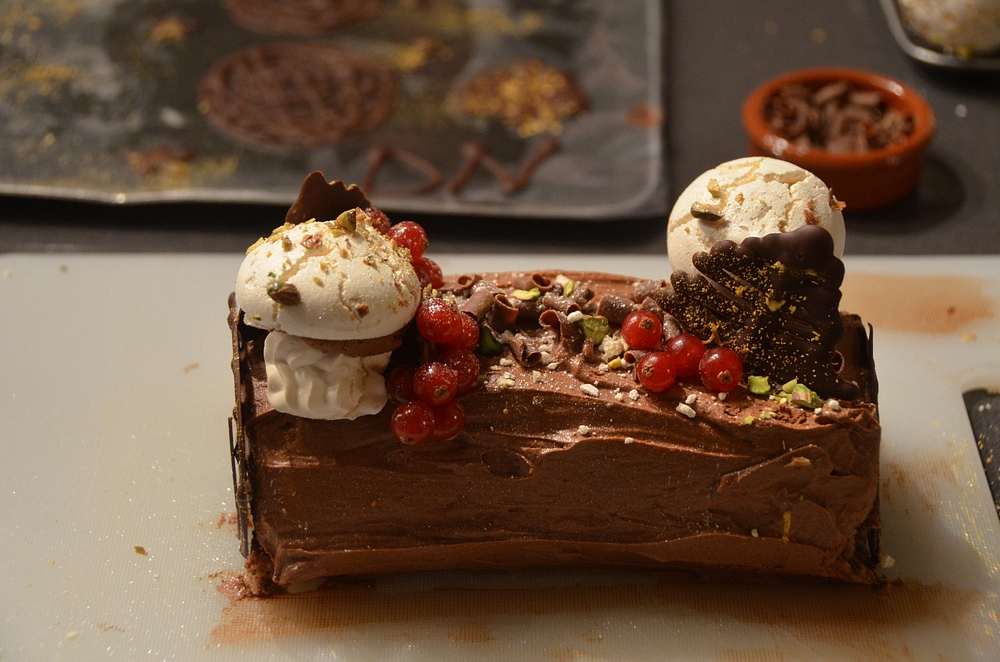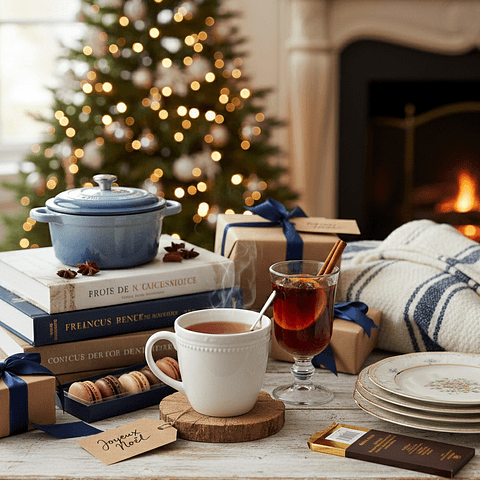Once the holiday season comes around we love diving back into all the many traditions of the time of year - including all the food we get to enjoy! One of these traditions inspires us every single year, and that's the Bûche de Noël. This is an annual invitation to get inspired and to take your imagination to new heights - along with all the best pastry chefs in the city! Every year, pastry shops, top hotels and ingenious chefs across Paris invent a brand new take on the Bûche de Noël, and the results are always astonishing - like this year's creation by Hotel le Burgundy pictured above. Not one yule log - a whole stack of them!
From the truly avant garde to the cosy and traditional, the Buche de Noël are a major event each year. Of course we love to get in on the action too and this year we're running our lovely Bûche de Noël class three times in early December so that you can learn all the skills you need to make this back at home! Why not join us for a class by signing up here!
Given the important of Yule Logs every year, it's no wonder that we always dedicate a blog post exclusively to the Best Bûche de Noëls of the year - and 2019 is no exception! You can find that blog post linked further on, but before you head over to see the most beautiful and imaginative creations of the year, let's learn why exactly this particular pastry invention is such a huge part of the seasonal tradition!

©LaCuisineParis
Back to Pagan Times
Like so many festivals and traditions that have survived in some form into modern times, the bûche de Noël has its roots in pre-Christian times. Back then it wasn't made of cake though - it was an actual log. Not tasty. To celebrate the Winter Solstice, a large log would be selected and slowly burned to ash at the centre of the hearth - which also marked the centre of life at that time. The log was sometimes taken from a fruit tree to try and encourage a good harvest the next year, and would have been decorated with holly or even "anointed" with salt and wine. The log was usually lit on Christmas Eve, and it was best to try and have it burn all the way to the New Year for luck. Once the log had burned all the way down, the ashes of the Yule Log were considered powerful and lucky - you might mix it into a remedy for illness, or even use them to protect your house from lightning.
From Log to Cake
At some point, when hearths became stoves and the necessity of burning an enormous log for an entire week became an unnecessary logistical challenge, some clever person decided that the Yule Log would be far more enjoyable if it was edible. And they were not wrong. Most sources date this transformation from log to cake to the 1600s, and instead of being decorated with holly, edible decorations were used and a sponge cake base became the norm: in fact this simple sponge is one of the oldest cake recipes still in use (and much loved today).
What's in a Bûche de Noël?
The sponge cake itself is a rolled Génoise that can be filled and covered with all manner of delicious ganache and little meringue decorations - a traditional favourite which allows you to have the whole cake masquerade as a log found in a mushroom-filled forest. Like the one above, made in our class last year!
The Best Modern Bûches
As we mentioned at the beginning of our post, these days the Bûche is a serious business! Every year sees the most incredible sculptural creations emerge from the kitchens of Paris' top pâtisseries and Grand Hotels. To see the best of this year, we'll be creating a dedicated blog post that will showcase them all - coming soon...
What's more - you can join us to make your very own Bûche de Noël! This year we'll be making cute mini Bûche! Read all about it and sign up here.

